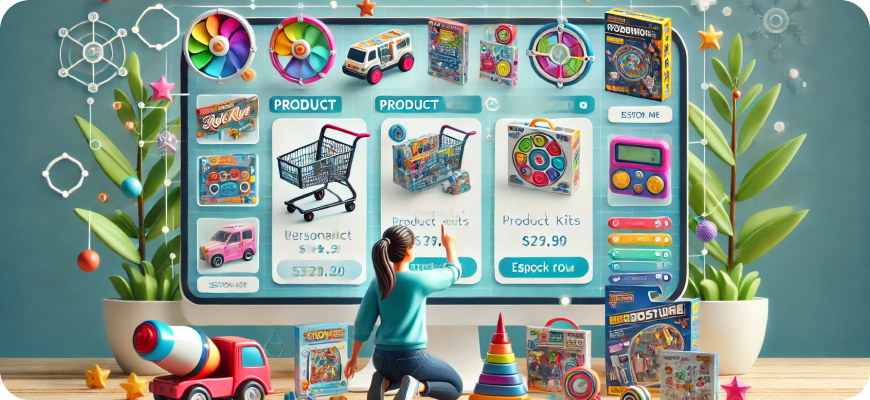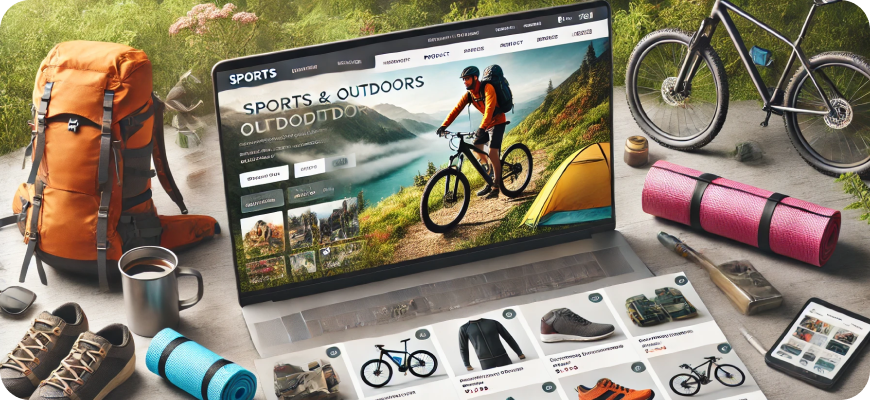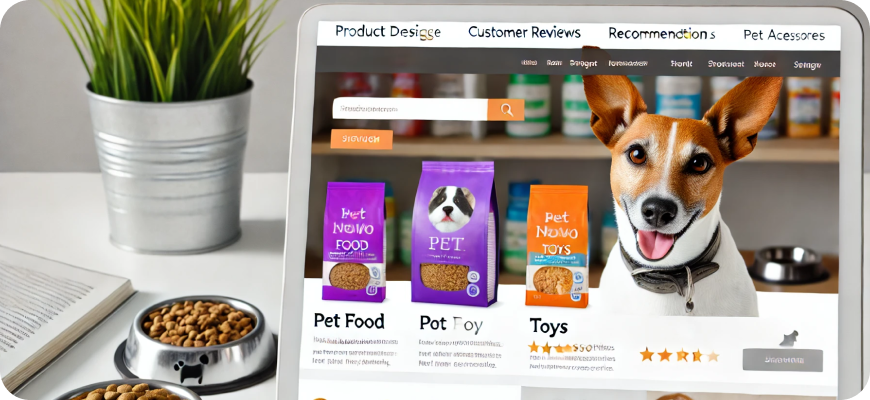How to Be Prepared for Seasonal Sales and Peaks
Seasonal sales and peak shopping periods are crucial for e-commerce businesses. Black Friday, Cyber Monday, holiday sales, back-to-school events, and other seasonal promotions can account for a significant portion of annual revenue. However, successfully capitalizing on these opportunities requires careful planning, robust infrastructure, and effective marketing strategies. In this article, we’ll walk through everything you need to know to prepare for seasonal sales and peaks, from inventory planning and marketing strategies to optimizing your website and customer service. With the right preparation, your business can maximize profits, enhance customer experience, and build long-term customer loyalty.
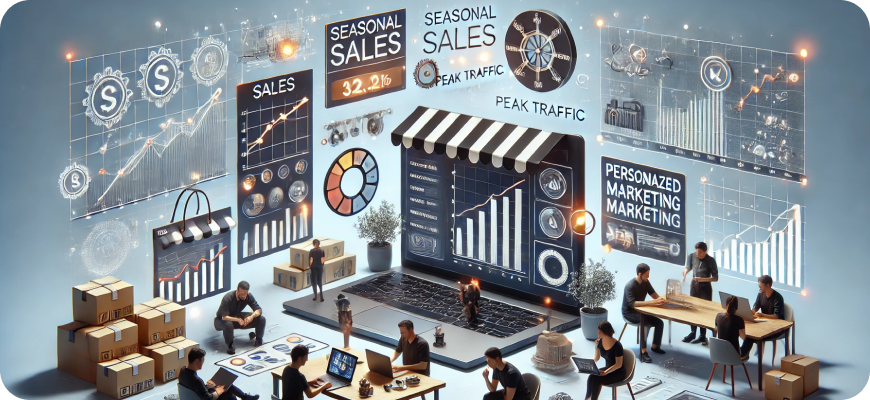
1. Plan Inventory Strategically
Inventory management is critical during peak shopping seasons. You don’t want to run out of stock for high-demand products, but at the same time, overstocking can lead to excess inventory after the season ends.
Steps for Strategic Inventory Planning:
- Analyze Past Sales Data: Review sales data from previous seasons to identify trends and high-demand items. This helps forecast inventory needs more accurately.
- Monitor Pre-Sales Trends: Check for emerging trends or spikes in demand as the season approaches. Pre-sales can give insights into which items will likely perform well.
- Use Inventory Management Software: Leverage software to monitor stock levels in real time. Tools like TradeGecko, Ordoro, or Shopify’s inventory features can help automate reordering and prevent stockouts.
- Establish Relationships with Suppliers: Ensure your suppliers can meet increased demand by communicating with them well in advance. Establishing a strong relationship can help with last-minute adjustments and quicker restocks if needed.
2. Optimize Your Website for High Traffic
Your website will experience an increase in traffic during seasonal sales. Ensure it’s optimized to handle the surge without compromising speed or user experience.
Website Optimization Tips:
- Load Testing and Server Capacity: Use load-testing tools like Apache JMeter or LoadNinja to assess if your website can handle high traffic. Increase server capacity temporarily if needed, especially for flash sales and Black Friday.
- Improve Page Load Speeds: Compress images, leverage a content delivery network (CDN), and use caching to reduce page load times. A fast website keeps visitors engaged and reduces bounce rates.
- Mobile Optimization: Ensure your site is fully responsive and offers a smooth shopping experience on mobile devices, as a significant portion of sales now occur via smartphones.
- Streamline Checkout Process: Reduce checkout steps, offer guest checkout, and use auto-fill features to simplify the process. Quick checkouts prevent cart abandonment.
Bonus Tip:
Keep an eye on site performance analytics throughout the sale. A sudden drop in load time or an increase in cart abandonment may signal performance issues that need immediate attention.
3. Craft a Comprehensive Marketing Strategy
Your marketing strategy is essential for driving awareness and traffic during seasonal sales. Use a multi-channel approach to reach customers wherever they are.
Key Marketing Strategies:
- Email Marketing Campaigns: Plan a series of emails that build anticipation, announce deals, remind customers, and create a sense of urgency. Personalized emails with dynamic content, like product recommendations based on browsing history, can boost engagement.
- Social Media Marketing: Leverage platforms like Instagram, Facebook, and TikTok to showcase upcoming deals, flash sales, and product highlights. Use countdowns, stories, and user-generated content to drive excitement.
- PPC Advertising: Invest in pay-per-click (PPC) ads to increase visibility, especially for high-demand products. Set up ad campaigns on Google and social media with targeted seasonal keywords and retargeting strategies.
- Influencer Marketing: Partner with influencers in your niche to promote your seasonal sales. Influencers can create authentic content that resonates with their followers, leading to increased brand visibility.
Bonus Tip:
Launch a “VIP Early Access” event for loyal customers. Rewarding loyalty with early access can drive sales before the official start of the sale and make customers feel valued.
4. Personalize the Customer Experience
Personalization is an effective way to enhance the shopping experience and increase conversions. Personalized recommendations, targeted messaging, and tailored promotions can make your customers feel special.
Personalization Tips:
- Dynamic Product Recommendations: Use tools like Nosto or Klevu to display personalized product recommendations based on browsing history, past purchases, and preferences.
- Segmented Email Campaigns: Segment your email list by customer behavior, purchase history, and demographics. Send personalized promotions and reminders to each segment to improve engagement.
- Personalized Discounts and Offers: Consider offering exclusive discounts for VIP customers or previous buyers. Personalized discounts, such as birthday discounts or rewards for high-value customers, encourage loyalty and repeat purchases.
- Targeted Pop-Ups: Use pop-ups strategically to offer discounts or capture emails. For instance, show pop-ups with free shipping for first-time buyers or exclusive offers for repeat customers.
5. Enhance Customer Support Capabilities
An increase in sales typically leads to a rise in customer inquiries. Prepare your customer support team to handle the volume efficiently and provide a positive experience.
Customer Support Tips:
- Train Support Staff for Peak Season: Make sure your customer support team is well-trained and prepared to handle the most common questions and issues related to seasonal sales.
- Implement Live Chat and Chatbots: Set up live chat for real-time assistance and use chatbots to handle basic inquiries. Automated bots can answer FAQs about order tracking, returns, and product availability.
- Self-Service Options: Create a comprehensive FAQ page, covering topics like shipping times, returns, payment options, and common troubleshooting steps. This reduces the load on customer support.
- Offer Multichannel Support: Be available across multiple channels, including email, phone, live chat, and social media, to meet customers where they prefer to reach you.
6. Prepare for Shipping and Fulfillment Challenges
With increased orders, timely shipping and efficient fulfillment become critical for a positive customer experience.
Fulfillment and Shipping Tips:
- Partner with Reliable Carriers: Work with multiple carriers to prevent bottlenecks. Consider offering expedited shipping options for customers willing to pay extra for quicker delivery.
- Automate Order Processing: Use automation tools to streamline order processing and minimize manual errors. Integrate shipping software like ShipStation or Shippo to automate label printing and tracking updates.
- Set Clear Shipping Deadlines: Communicate order-by dates for guaranteed holiday delivery. Let customers know the last day they can place an order to receive it by a specific holiday.
- Consider Outsourcing Fulfillment: If your in-house team might struggle with high volumes, consider working with a third-party logistics (3PL) provider to manage warehousing, picking, and packing.
7. Implement Effective Promotions and Discounts
Seasonal sales are all about deals and promotions. Plan your offers strategically to attract customers while maintaining profitability.
Promotion Ideas:
- Flash Sales: Offer time-limited deals on specific products to create urgency. Flash sales encourage impulse buying and drive more traffic to your site.
- Bundle Discounts: Create product bundles and offer a discount on the combined price. Bundling products increases average order value and encourages customers to buy more.
- Buy One, Get One (BOGO) Deals: BOGO deals work well for inventory clearance and encourage customers to buy more. For example, buy one and get the second item at 50% off.
- Tiered Discounts: Offer larger discounts for higher cart values. For instance, “Get 10% off on orders over $50, 15% off on orders over $100, and 20% off on orders over $200.”
Bonus Tip:
Consider using “mystery discounts” to add excitement. Allow customers to reveal their unique discount code, which can drive interest and increase sales.
8. Optimize for Mobile Shopping
Mobile commerce is growing rapidly, and many customers will shop on their phones during peak sales periods. Ensure your website is optimized for mobile devices.
Mobile Optimization Tips:
- Responsive Design: Ensure your site has a responsive design that works well on all screen sizes. The layout, images, and text should automatically adjust for mobile devices.
- Simplified Navigation: Make it easy for mobile users to browse your site. Use dropdown menus, clearly labeled categories, and a prominent search bar.
- Mobile-Friendly Checkout: Streamline the mobile checkout process with auto-fill options, mobile payment options like Apple Pay or Google Wallet, and a minimal number of required fields.
- Test on Different Devices: Test your site on various devices and browsers to ensure consistent performance.
9. Prepare Your Analytics and Reporting
Tracking performance metrics is essential for measuring the success of your seasonal sales strategy. With analytics, you can gain insights into customer behavior, high-performing products, and areas for improvement.
Key Metrics to Track:
- Conversion Rate: Measure how many visitors are converting into customers. Analyze conversion rates for various traffic sources to identify high-performing channels.
- Average Order Value (AOV): Monitor AOV to assess the impact of upselling and bundling strategies.
- Cart Abandonment Rate: Track cart abandonment and identify issues that could be causing customers to leave without purchasing.
- Customer Acquisition Cost (CAC): Measure the cost of acquiring new customers through paid channels. Compare it with the revenue generated to evaluate the effectiveness of your marketing spend.
Bonus Tip:
Set up automated reports to track sales in real-time. This allows you to respond quickly to any issues and make adjustments to optimize performance.
10. Follow Up with Post-Sale Engagement
After the peak season ends, continue engaging with customers to build loyalty and encourage repeat purchases.
Post-Sale Engagement Tips:
- Thank-You Emails: Send personalized thank-you emails to show appreciation and build a positive brand experience.
- Request Reviews and Feedback: Ask customers to leave reviews and share their experiences. Positive reviews can boost your brand’s credibility, while feedback offers insights for improvement.
- Post-Sale Discounts: Offer a small discount or free shipping on the next purchase to encourage repeat business.
- Re-Engagement Campaigns: Run email or social media campaigns to re-engage seasonal customers and encourage them to shop again.
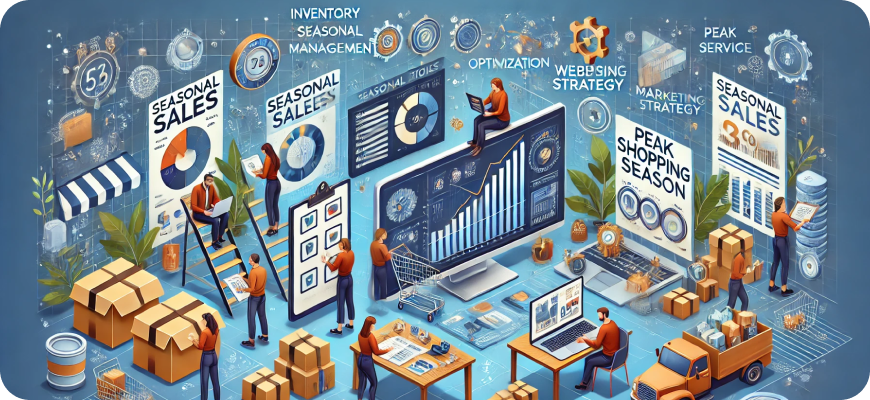
Conclusion
Being prepared for seasonal sales and peaks involves a comprehensive approach to inventory, marketing, website optimization, customer support, and fulfillment. With strategic planning and a focus on enhancing the customer experience, your e-commerce business can capitalize on seasonal opportunities, boost sales, and build long-term customer relationships. By implementing these best practices, you’ll be well-positioned to meet the demands of peak shopping periods and turn first-time buyers into loyal customers who return long after the season ends.

